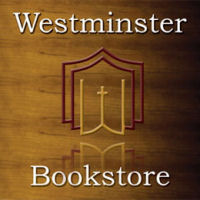The Last Cycle of Visions: Revelation 19-22 (Part 2)The Last Judgment: Revelation 20
So John has just witnessed the final defeat of the false prophet, of the beast, and of Satan himself. In a tremendous display of his might, Christ defeated them solely by his Word. But as John looks again, he sees a vision of a great white throne. As God enters the picture, we sense the dread fear with which His creation regards him. We read that "earth and sky fled from his presence."

The dead are all standing before the white throne, and we see that there are two books being opened - the contents of which are of tremendous importance. In one book are all of the deeds each person has done, and in the other, we have something like "a civic record, in which the citizens of the city of God have their names inscribed." Koester recognizes that this book was written "from the foundation of the world," and rightly recognizes that some readers will sense the helpless approach of Calvin's hoofbeats. "Note that in the judgment, both divine grace and human accountability are important, but God's decision is finally based on the grace that is represented by the book of life." He raises the concern that some have regarding the fact that the names have been written "from the foundation of the world," but seems to sidestep the question by simply recognizing that the rescue is at hand if they will only believe, since that is the path of escape. "[L]eave matters concerning the final judgment in God's hands" (191).
Notice that those whose names are not written in the book of life have plenty of deeds in the other book by which they are judged. I'm so tempted to start making my own comments about the predestinarian elements in this section of Revelation, but I will restrain my tendencies, since Koester himself does not dwell here. But let it unofficially be remembered that the Book of Life is a very counter-intuitive idea to your average modern evangelical Arminian.
The New Jerusalem: Revelation 21
Throughout Revelation, there has been this tension between promise and warning. "To the one who overcomes" is the common refrain which we hear, and now we see those promises fulfilled in the New Heaven and the New Earth. So throughout, from beginning to end, Revelation has consistently hammered the message of enduring hardship and persecution. All those trials, pains, hardships, and martyrdoms are finding their promises fulfilled here. Although at this point in the narrative, the city's inhabitants have been decided, the reader is still offered another reminder of warning: that "the cowardly, the unbelieving, the vile, the murderers, the sexually immoral, those who practice magic arts, the idolaters and all liars" will not have any part in this new creation, but that, rather, their place will be in the lake of fire. The heavenly voice names off these sins - all of which we have broken to some degree " in order to move people to reject sins and to trust in the grace Christ provides." Revelation is in many respects an evangelistic book.
In 21:9, an angel tells John, "Come, I will show you the bride, the wife of the Lamb." But the next thing he shows him is a city - the New Jerusalem. Some readers might be expecting then, to look into the city and see the Bride, but alas, the city itself is His Bride. Whereas Babylon is associated with the Harlot, the New Jerusalem is associated with the Bride - the same one who was earlier pursued by the Dragon.
When we come to the dimensions of the New Jerusalem, we receive another clue to the symbolic nature of the New Jerusalem, because we are told that its dimensions are 12,000 stadia on each side; this is not-so-coincidentally the same as the number of each tribe in the 144,000. Consider the alternative; if this is not a symbolic representation of the city, then for the first time in human history, we have a city that looks suspiciously like the Borg Cube from Star Trek. Also consider that this cube would cover about half of the United States in its size, since it would actually be around 1500 miles on every side and also extend 1500 miles into space. This is hardly a picture of a literal city. Also, remember that Ezekiel's vision of the restored city pictured it as being only a mile and a half on each side (Ezekiel 48:8-9). The city is the Church, and she is His beautiful Wife (ESV). By referring to its size as being perfectly cubical and 12,000 stadia on each side, "The New Jerusalem's holiness and perfection is expressed." The point is not the
quantity of the city, but rather, the
quality. (Koester also points out that the city's cubic shape suggests that the city is a sanctuary, much like the inner chamber of the tabernacle and temple, which were also cubical in shape.)
The River of Life/The End Is Near: Revelation 22
In addition to being a city in which there will no longer be any uncleanness, the church is also pictured as returning to the state of pre-fall Eden. Not only will the river of life run through the city, but the Tree of Life, which eluded Adam and Eve at the time of the Fall will be returned to redeemed humanity.
In the New Jerusalem, the barriers of sin and mortality are removed by the grace of God, and the redeemed find themselves again in the garden. Instead of hiding from God's face, they turn towards God's face...The promise that the righteous might one day see the Lord comes to its fulfillment (Ps. 11:7; Matt. 5:8; 1 John 3:2). The night of sin and death is gone; the uncertainty issues into understanding (1 Cor. 13:12). The story of God's people reaches its culmination when they 'rest and see, see the love and praise. This is what shall be in the end without end' (Augustine, The City of God 22.30).
(200)
Koester says that there are two reasons why Revelation "can and should speak to people today."
- Christians culturally encounter similar situations to those in the seven churches to whom this letter was written.
- Revelation speaks of the timeless one Who "was and is and is to come." Because Christ is objective and real and does not change, the realities communicated about Him in Revelation are still every bit as true now as they were when they were first written.
The Spirit and the bride say, 'Come.'
And let everyone who hears say, 'Come.'
And let everyone who is thirsty, come.
Let anyone who wishes take the water of life as a gift.
Revelation 22:17
I will be writing one more blog post with regards to Koester's book, and in that post I will be offering what essentially amounts to a review of the book, now that I have tried to present Koester's views and basic arguments.

































